By: Robert Darby & Erin Darby
“The stone was huge, well over 500 pounds. It was quite a thing to witness. It was face down in the dirt, and using lots of muscle the workmen were able to stand it up. I looked at it and all I saw on its face was packed sand. For a split second I was very disappointed, thinking that we were wrong and there was no inscription carved on it. Then one of the workers started brushing the sand off with his hand, which we were not supposed to do! The director of the project said ‘stop, stop, stop!’ to him, but it was too late. But, secretly I’m glad he wiped off the sand, because for the briefest moment I saw letters in red paint! It was probably the coolest moment of my life to get a glimpse of those letters. Our representative from the Jordanian Department of Antiquities, usually a quiet and soft-spoken man, starting jumping up and down yelling ‘It has writing, it has writing!’ Another one of the directors did her ululation sound, the ‘YALALALALALA!’ call Middle Eastern women make. It echoed all throughout the valley. It was such an exciting moment.”
This is how Emma Pugmire, an undergraduate in Classics at the University of Tennessee and Jennifer C. Groot Fellow at the American Center of Oriental Research in Amman, described the remarkable events at the archaeological site of ‘Ayn Gharandal, in southern Jordan this past June. After two and a half weeks of careful excavation and recording in the scorching summer heat, the ‘Ayn Gharandal Archaeological Project (AGAP) uncovered the type of find that many archaeologists dream of making – a monumental inscription.
Today the site of ‘Ayn Gharandal lies buried amidst the drifting sand dunes on the eastern edge of the Wadi Arabah, ca. 70 km north of Aqaba (Roman Aila) on the Red Sea and ca. 40 km SW of the ancient Nabataean city of Petra. Its location between these two famous cities of antiquity and near a spring fed oasis made it an important exchange point for the vigorous caravan trade that brought goods such as frankincense, myrrh, olive oil, and even pottery to the furthest reaches of Rome’s empire. AGAP has been investigating the site sinceunder the direction of Robert Darby and Dr. Erin Darby both at the University of Tennessee.
Several ancient structures have been identified by AGAP’s excavations at ‘Ayn Gharandal, including a well-preserved Roman bathhouse. However, the largest of these is a Late Roman fort measuring ca. 40 x 40 m, which dominates the site. The fort and bathhouse at ‘Ayn Gharandal parallel other Late Roman military sites in the region, such as Bir Madhkur, ‘En Hazeva, and Yotvata, in both architectural design and strategic location, controlling the scarce water resources along the trade routes through the Wadi Arabah. While each site is unique, similarities between these and numerous other Roman military installations found along Rome’s eastern frontier zone, or Limes, indicate a concerted effort to strengthen Rome’s imperial presence in the Near East in the late 3rd- early 4th centuries, beginning in earnest during the reign of the emperor Diocletian and his three co-rulers (293-305 CE), known today as the Tetrarchy. In addition, several notable ancient authors such as Eusebius of Caesarea, Ammianus Marcellinus, and John Malalas attest to the building activity of the Late Roman army in the East during this period.
Another important source of data regarding the build-up of Rome’s defenses in Late Antiquity is the corpus of inscribed milestones and building inscriptions, although exceptionally rare and often fragmentary. In fact, only four epigraphic examples from the entirety of the Roman provinces of Arabia and Syria-Palaestina can be associated with the construction of a Tetrarchic-era fortification. These include building inscriptions from the castella at Deir el-Kahf (305/306 CE; fragmentary, now lost), Qasr Bshir (293-305 CE; in situ above gate), Yotvata (ancient Costia/Osia 293-305 CE; found lying in front of gate, now in the Israel Museum), and the legionary camp at Udruh (ancient Adrou 293-303 CE; found lying in front of gate, now broken).
On Monday June 17th an important new addition to this epigraphic corpus was unearthed at ‘Ayn Gharandal. Nicole Swartwood, an undergraduate in Religious Studies at the University of Tennessee, recalls the moment of discovery: “This afternoon, after assembling the entire dig team a giant piece of limestone was prepared to be removed from the gate square. Finding (and flipping) this stone was a highly anticipated event for this dig season; the moment of truth was here. I was still at work in my square, but I knew something was a foot as soon as I heard the cheers. I knew that they had found it. They had the dedicatory inscription. They had found a rare, information filled, inscription that can date our fort and more. Immediately after flipping the stone, a Bedouin workman did what everybody wanted to do – brushed off the sand looking for the inscription. It was visible, if only for a moment – Imperial Latin text with remnants of red paint still adhering to the surface of the stone. What had been toppled face down in the sand for centuries now again met the light of day – only to be covered with sand (again).”
Excavation of the fort’s main gate, which contained the massive inscribed block, was overseen by Dr. Carrie Duncan, Assistant Professor in the Department of Religious Studies at the University of Missouri-Columbia. After a concerted effort by the workmen and several students, the stone was flipped, carefully placed on its back, and immediately covered in order to preserve its red paint. From there, the massive stone (0.90 m x 0.65 m x 0.25 m in size) was raised from the excavation square and transported directly to the conservation lab at the American Center of Oriental Research in Amman, where it is currently being cleaned and treated by Dr. Fatma Marii, Conservator for the Jordan Museum, and Brittany Dolph, ‘Ayn Gharandal/ACOR Conservation Intern from the UCLA/Getty Program in Archaeological and Ethnographic Conservation.
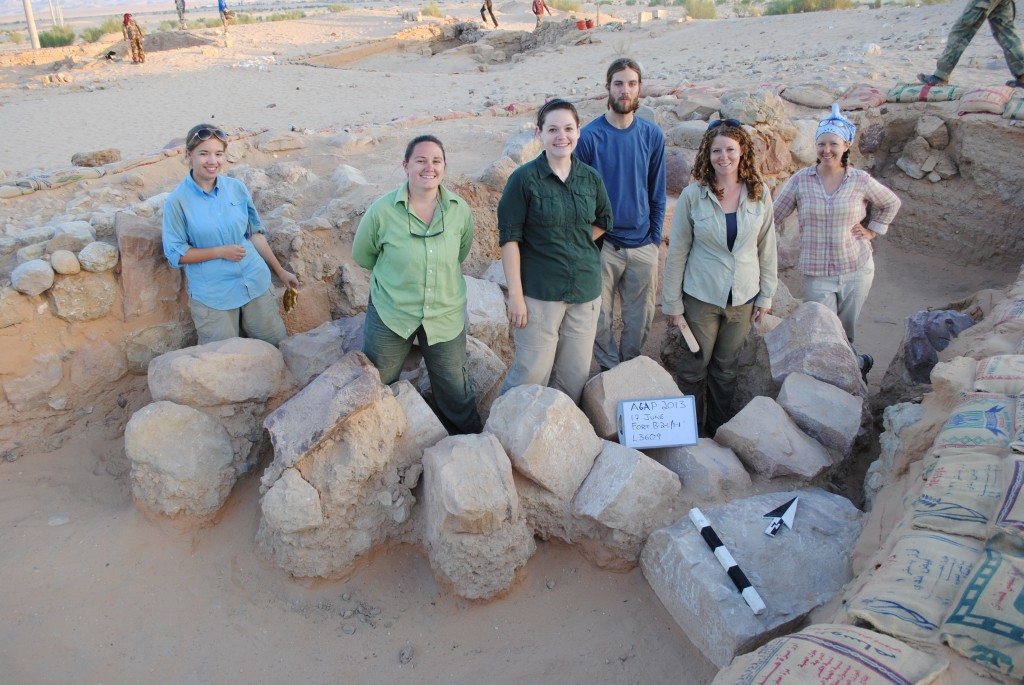
The ‘Ayn Gharandal inscription and its excavators from right to left—Dr. Carrie Duncan, Emily St. John Mosse, Dane van Eys, Leigh Anne Cutshaw, Krista Adamsky, and Emma Pugmire.
The text of the inscription, although still in the early stages of analysis, is well-preserved and complete, save for areas that were intentionally altered in antiquity. The inscription is set within a carved frame, or tabula ansata, also containing decorative reliefs of laurel branches and a garland. It lists the names of the two senior and junior emperors, or augusti and caesares, to whom the inscription is dedicated – Diocletian, Maximian, Galerius, and Constantius I. Thus the monumental inscription not only provides a date for the foundation of the fort at ‘Ayn Gharandal during the reign of the Tetrarchy (293-305 CE) but also provides a terminus post quem for all subsequent occupation at the site.
In addition, the inscription confirms the site’s name in antiquity. It has long been believed that the modern Arabic name “Gharandal” derives from Arieldela, listed in the Notitia Dignitatum (Or. 34.44) as the location of the Cohors II Galatarum, a Roman auxiliary infantry unit. A total lack of any archaeological evidence from ‘Ayn Gharandal confirming its identification left the ancient name of the place and the unit garrisoned there a matter of scholarly speculation – until now. The inscription unearthed during theseason indicates that the site is the location of the Cohors II Galatarum, confirming the ancient name of ‘Ayn Gharandal as Arieldela.
Ultimately, part of the inscription’s significance relates to its archaeological context. Unlike comparable inscriptions at Yotvata and Udruh, which were not found during stratigraphic excavation, the ‘Ayn Gharandal inscription was preserved in situ above the gate collapse that occurred during an earthquake, either in 363 CE or later. Such an impressive find would be a ‘dream come true’ for looters, who have already disturbed the site’s bathhouse and eastern ridge. Instead, the inscription can now be analyzed in both its architectural and archaeological context, along with all other materials in the same area.
About the authors: Robert Darby is a lecturer in Art History in the School of Art at the University of Tennessee. Erin Darby is an assistant professor in the Department of Religious Studies at the University of Tennessee. Robert and Erin are co-chairs of the ASOR Junior Scholar’s Committee and members of the ASOR Chairs Coordinating Council. They have co-authored a number of articles on the excavations at ‘Ayn Gharandal.
If you liked this article please sign up to receive The Ancient Near East Today via email! It’s our FREE monthly email newsletter. The articles will be delivered straight to your inbox, along with links to news, discoveries, and resources about the Ancient Near East. Just go here to sign up.
All content provided on this blog is for informational purposes only. The American Schools of Oriental Research (ASOR) makes no representations as to the accuracy or completeness of any information on this blog or found by following any link on this blog. ASOR will not be liable for any errors or omissions in this information. ASOR will not be liable for any losses, injuries, or damages from the display or use of this information. The opinions expressed by Bloggers and those providing comments are theirs alone, and do not reflect the opinions of ASOR or any employee thereof.

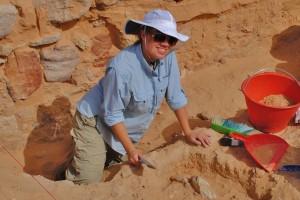

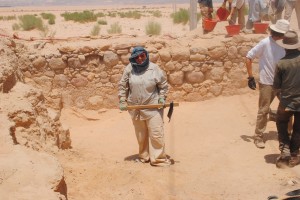
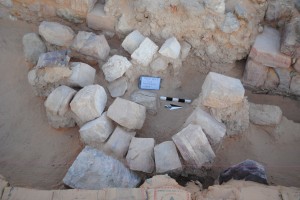
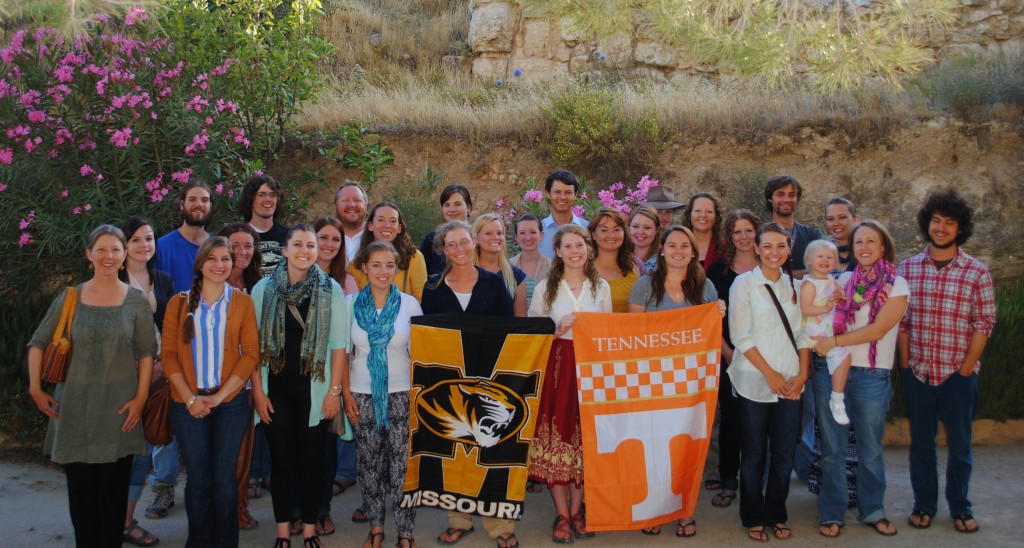
What a wonderful discovery! As someone interested from a spectator's point of view, this article gives great perspective and very understandable information. As a language instructor, it is thrilling to read about the importance of the written word and its affect on history.
Pingback: Current Epigraphy » A New Monumental Latin Inscription at ‘Ayn Gharandal (Ancient Arieldela), Jordan
Robert and Erin: It was wonderful to visit your site this summer just a few days after the inscription was found. It was also exciting to see the inscription at ACOR just before our visit. I also saw the Yotvata inscription at the Israel Museum just a week later. Now your article with the photos brings it all together. Congratulations once again on your find. Thank you for this very instructive Blog post that describes the archaeological context and the "back story" behind this amazing discovery.
Pingback: Roman Empire Archeology News Today 08-15 - Roman Empire News and Archeology
Pingback: Lost Roman outpost discovered in southern Jordan : Archaeology News from Past Horizons
Pingback: Archaeologists Uncover Lost Roman Outpost in Southern Jordan Art Frantic | Art Frantic
well done Robert & Erin
Pingback: Words in the Sand | Higher Ground